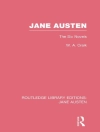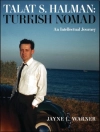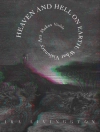Special issue focusing on violence in fifteenth-century life, text, and image: warfare and justice, violence in family and milieu (court, town, village, and forest), hagiography, ethnicity and xenophobia, gender relations and sexual violence, brutality on the stage, and the relation of text and image in the depiction of violence.
Founded in 1977 as the publication organ for the Fifteenth-Century Symposium,
Fifteenth-Century Studies has appeared annually since then. It publishes essays on all aspects of life in the fifteenth century, including literature, drama, history, philosophy, art, music, religion, science, and ritual and custom. The editors strive to do justice to the most contested medieval century, a period that has long been the stepchild of research. The fifteenth century defies consensus on fundamental issues: some scholars dispute, in fact, whether it belonged to the middle ages at all, arguing that it was a period of transition, a passage to modern times. At issue, therefore, is the very tenor of an age that stood under the influence of Gutenberg, Columbus, the
Devotio Moderna, , and Humanism.
Volume 27 is a special issue offering a selection of outstanding papers on violence that will interest students of medieval history and the early Renaissance, the humanities, art history, sociology, anthropology, and even the general reader. The articles highlight warfare and justice, violence in family and milieu (court, town, village, and forest), hagiography, ethnicity and xenophobia, gender relations and sexual violence, brutality on the stage, and the relation of text and image in the depiction of violence.
Edelgard E. Du Bruck is professor in the Modern Languages Department at Marygrove College in Detroit; Yael Even is associate professor of Art and Art History at the University of Missouri, St. Louis.
قائمة المحتويات
Preface – Edelgard E. Du Bruck
Introduction – Yael Even
Spectator Responses to an Image of Violence: Seeing Apollonia – Marla Carlson
Der ernsthafte König oder die Hölle schon auf Erden: Gewalt im Dienste des Seelenheils – Marianne Derron
Lazarus’s Vision of Hell: A Significant Passage in Late-Medieval Passion Plays – Edelgard E. Du Bruck
Violence and Late-Medieval Justice – Edelgard E. Du Bruck
La noblesse face à la violence: arrestations, exécutions et assassinats dans les
Chroniques de Jean Froissart commandées par Louis de Gruuthuse (Paris, B.N.F., mss fr. 2643-46)commandées par Louis de Gruuthuse – Olivier Ellena
The Music of the Medieval Body in Pain – Jody Enders
The Emergence of Sexual Violence in Quattrocento Florentine Art – Yael Even
Some Lesser-Known Ladies of Public Art: On Women and Lions – Yael Even
The Self in the Eyes of the Other: Creating Violent Expectations in Late-Medieval German Drama – Matthew Z. Heintzelman
Cleansing the Social Body: Andrea Mantegna’s
Judith and the Moor (1490-1505) – Carol Janson
Aggression and Annihilation: Spanish Sentimental Romances and the Legends of the Saints – Claudia Kruells-Hepermann
Der
Malleus Maleficarum (1487) und die Hexenverfolgung in Deutschland – Ina Lommatzsch
‘For They Know Not What They Do’: Violence in Medieval Passion Iconography – Robert Mills
Zur Bedeutung von Gewalt in der
Reynaert-Epik des 15. Jahrhunderts – Rita Schlusemann
Terror and Laughter in the Images of the Wild Man: The Case of the 1489
Valentin et Orson – Shira Schwam-Baird
Rereading Rape in Two Versions of
La Fille du comte de Pontieua – Nancy E Virtue
The French Kill Their King: The Assassination of Childeric II in Late-Medieval French Historiography – Sanford Zale
عن المؤلف
SHIRA SCHWAM-BAIRD is Professor Emerita of French, University of North Florida.












